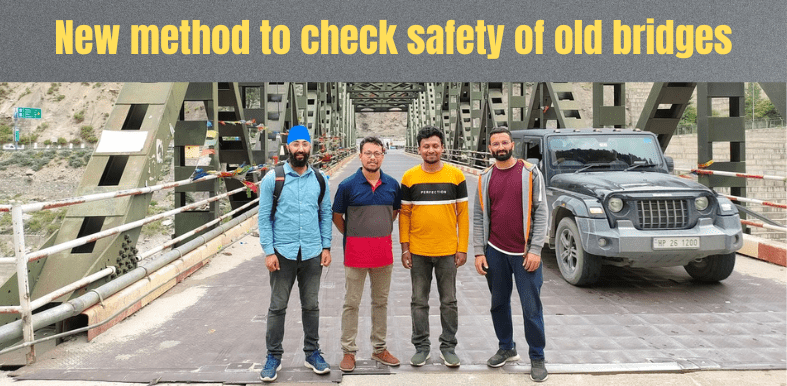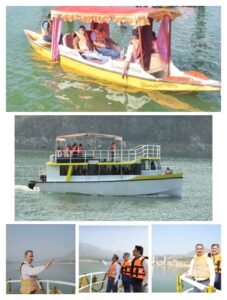IIT-Mandi researchers develop technique to assess health of ageing bridges

MANDI: A research team of IIT-Mandi led by Subhamoy Sen, Associate Professor, School of Civil and Environmental Engineering, has developed an innovative method to monitor the health of ageing bridges using traffic data. This approach zeroes in on the most vulnerable parts of a bridge, significantly enhancing safety and efficiency.
Sen, along with his research scholar Eshwar Kuncham has addressed the challenges of fatigue-induced damage and gradual deterioration of bridges by focusing on the most critical areas rather than monitoring the entire structure. Their research has been published in the prestigious journal Structural Health Monitoring.
This innovative approach develops a digital model of the bridge — a detailed virtual replica based on an initial study of the actual structure. This model predicts how different traffic patterns impact various parts of the bridge over time, helping experts identify the areas most susceptible to damage.
Also Read: https://thenewzradar.com/vigilance-record-at-nerchowk-municipal-council-office-over-tender-scam/
Crucial part played by sensors
After pinpointing these critical zones, fatigue-sensitive sensors are installed at key locations to monitor stress and vibrations. This real-time data, combined with traffic patterns from the digital model, allows experts to track how traffic affects the bridge over time. If necessary, adjustments to traffic flow and speed can be made to ensure the bridge’s safety and prevent damage.
Bridges endure various cyclic loads throughout their lifetimes, including traffic, wind, and environmental conditions. Over time, these repeated stresses can weaken the integrity of the structures, leading to potential catastrophic failures. Addressing fatigue in bridges is therefore essential, prompting significant advancements in engineering research to predict and prevent such failures.
Also Read: https://thenewzradar.com/new-twist-to-sanjauli-mosque-controversy-masjid-committee-offers-to-demolish-illegal-portion/
Traditional methods of assessment
Traditionally, assessing a bridge’s remaining useful life (RUL) involved simplistic methods with broad safety margins, which were not always accurate. Later advancements, such as rain flow counting and finite element analysis (FEA), provided a more detailed understanding of stress and fatigue. Recently, statistical approaches and machine learning have further refined these predictions.
However, these methods can be costly, require extensive equipment, and may still overlook hidden issues, particularly in older bridges with uncertain material conditions.
Highlighting the practical benefits of his research, Sen said, “Our approach focuses on monitoring only the critical zones of a bridge, significantly reducing costs and the need for extensive equipment. By leverageing traffic data, we provide real-time assessments and make timely interventions, ensuring bridge safety and longevity without major traffic disruptions.”
Allows officials to take safety decisions
This method also allows for rapid assessments after events like earthquakes or floods, aiding officials in making quicker safety decisions. Once the initial setup is complete, regular monitoring can be handled by less specialised personnel, further reducing costs and making it easier to apply to multiple bridges.
For government agencies and transportation departments, this approach offers a practical and efficient solution for manageing ageing infrastructure. It enables more effective budget allocation by focusing on high-risk areas rather than the entire bridge and supports faster decision-making in emergencies, enhancing public safety. Additionally, it minimizes the need for extensive and disruptive traffic management during inspections, reducing inconvenience for commuters.




